Who is Apple's top designer Jony Ive?
- Published
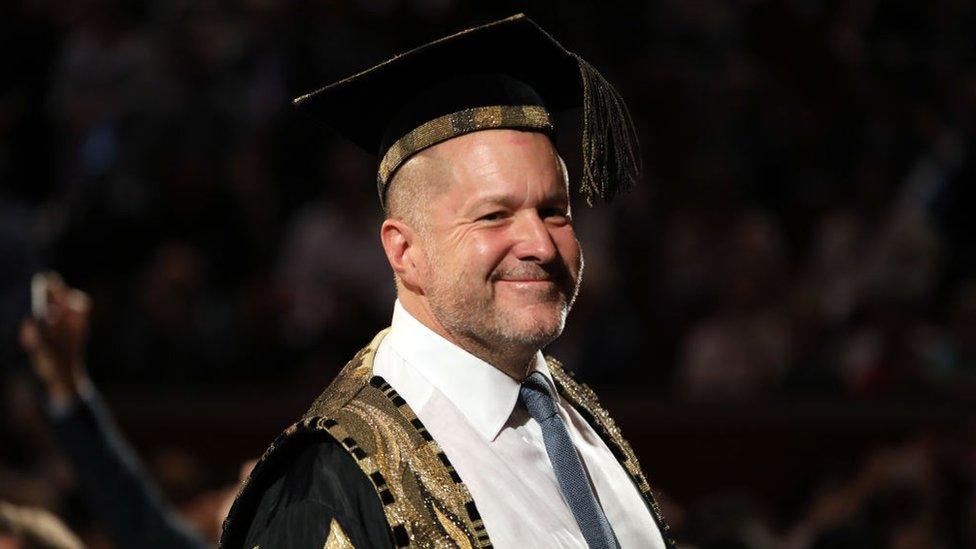
Sir Jony Ive has designed some of Apple's most iconic products over the years and was a key influence on the firm's simplistic design.
The 52-year-old has spent the better part of his adult life at Apple and was close to its co-founder, Steve Jobs.
The departure of the "thoughtful" Sir Jonathan for his own company will be a loss for Apple, which is already facing challenges.
From the "ground-breaking" iMac to Apple's ambitious new Apple Park campus, he has helped to shape one of the world's most successful companies.
"Jony is a singular figure in the design world and his role in Apple's revival cannot be overstated," said Tim Cook, Apple's chief executive.
Sir Jonathan grew up in Chingford, Essex, born to a silversmith and a schools inspector.
He studied design at Newcastle Polytechnic - now Northumbria University - and it is there he designed his first phone, which looked like a gadget from a sci-fi movie.
After graduating, he worked at a London-based design consultancy that had Apple among its clients. He began working at Apple in 1992.
He went on to became head of the company's design team at a time when Apple was in poor financial health and cutting jobs.

Apple computers through the years on display at the Design Museum in London
His design of the iMac in 1998 and the iPod in 2001 helped to trigger a dramatic turnaround in the firm's fortunes. Other landmark designs that followed included the iPhone in 2007 and the iPad in 2010.
"From the coloured iMacs and the different generations of Apple products; the computer line, the laptop line, the iPhone and every generation of iPhone since then, the iPad generations, the transformers, the chargers, the connectors - all of those things came out of Jony's team," says Tim Kobe, the chief executive of Eight Inc and the designer of the first four generations of Apple retail stores.
More recently, Sir Jonathan has been responsible for Apple Park, the company's new 175-acre campus in California.
The campus, which opened in 2017, external, features a 2.8 million-sq-ft main building with the world's largest panels of curved glass.
The cult of Jony Ive
Sir Jonathan has achieved something akin to cult "folk hero" status, external with the general public - in particular Apple fans, but why?
"There is a fascination with Jony Ive because he is a mysterious figure who tends to shun publicity but when he talks, he sums up Apple's values," says Macworld UK editor David Price.
Since the death of Steve Jobs, the technology pioneer and co-founder of Apple who died in 2011, Apple fans have looked to Sir Jonathan even more, Mr Price adds, because he has more charisma, external than Apple's chief executive Tim Cook. Videos of Sir Jonathan frequently go viral online.
"He is charismatic but he's also shy. People really like the fact he doesn't push himself forward, he's thoughtful and reserved. He always credited his team."
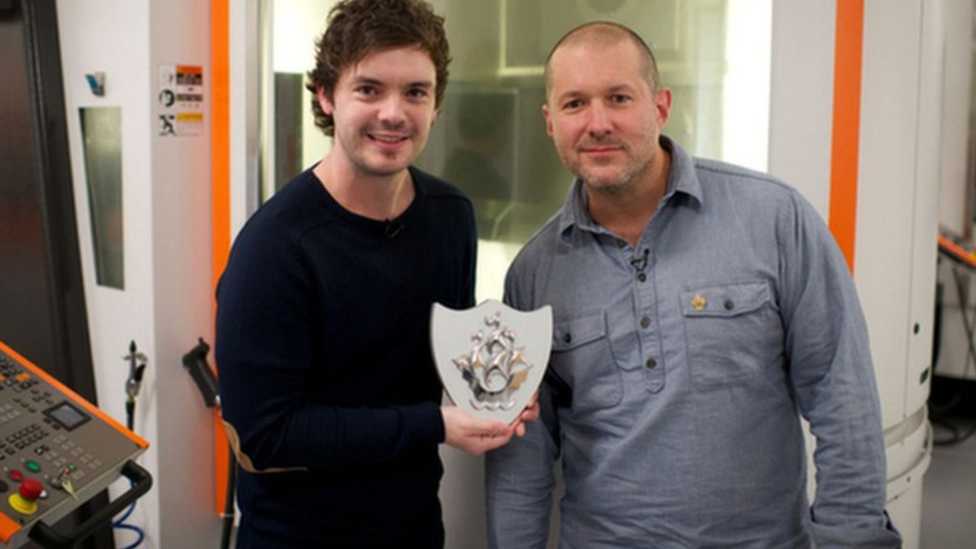
Blue Peter's Barney Harwood presented Sir Jonathan with a Blue Peter badge in 2013
Mr Price remembers an appearance Sir Jonathan made on the BBC children's TV show Blue Peter in 2013.
"On Blue Peter he was judging designs by children and he put a lot of thought into their work and gave them really good feedback."
Creating desirability
According to Mr Price, the late Steve Jobs understood that design was absolutely key to the success of products, and so he made Apple's chief designer a member of the management suite of executives.
Over time, Sir Jonathan would eventually oversee both the software and hardware design for all Apple products.
Not all of these products have been a success - there have been missteps, like the Magic Mouse 2, which had a charging port on the bottom, so it couldn't be used while it was charging.

However, on the whole Sir Jonathan is considered to be responsible for much of Apple's success and popularity with consumers.
"He gave Apple desirability. He stripped away layers of clunky technological design and he created these incredibly smooth shiny objects with rounded edges and fewer buttons," says the Design Museum's chief curator, Justin McGuirk.
"He applied the tradition of German modernism from the mid-20th Century, which upheld the philosophy that less design was better. The more you can reduce something, the more beautiful and functional it is. He created this ideal of a tech product, which was easy to use, beautiful and uncluttered."
The Design Museum awarded Sir Jonathan its inaugural Designer of the Year award in 2003, because he was already becoming something of a household name.
"People usually can't name designers in the tech world - they can rarely name designers at all, unless they're fashion designers," said Mr McGuirk.
"Undeniably, over the last 20 years, if you look at how any laptop or smartphone is designed, companies are finding it hard to distinguish themselves from an aesthetic Apple designed. They're following - not leading."
Sir Jonathan has spoken about the importance of simplicity during several press interviews over the years.
"As a designer, what I think you are trying to do is solve extremely complex problems but make that resolution very simple. You're not dragging people through the victories - or otherwise - that you've been working on," Sir Jonathan said in an interview with the Financial Times, external.
"I'm really proud of all of those victories that are unseen."
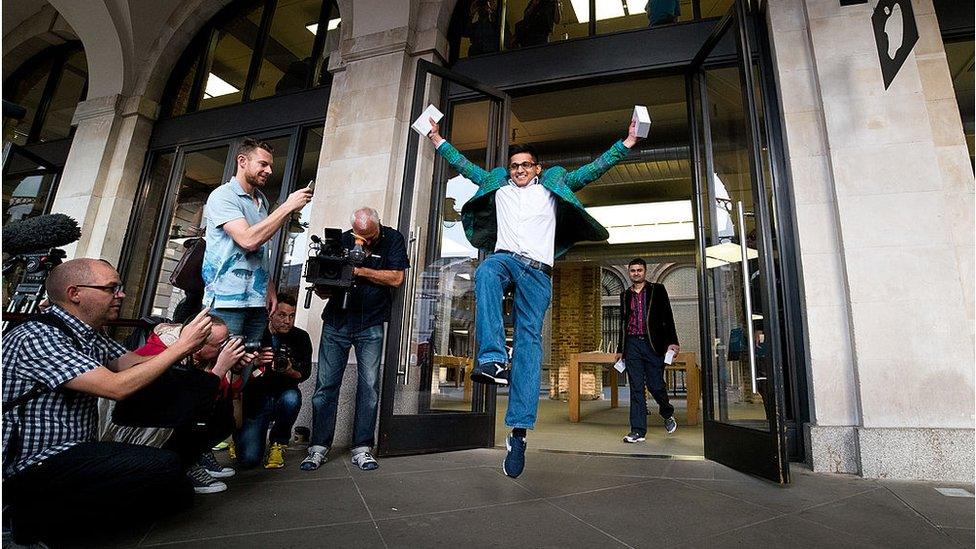
Apple fans queue round the block overnight for the chance to be the first to purchase a product at launch
With Sir Jonathan departing Apple to start his own firm, there are concerns that Apple products won't be the same any more.
"Apple were terrified of losing him," says Mr Price. "He's the star. He's the talent. There will be an amazing set of designers left behind - that's the team he put together - but people are going to start to worry.
"I don't think it can be business as usual. He's going to taper off the work he does for Apple, whether it's fairly soon or takes a few years."
- Published28 June 2019

- Published1 May 2019
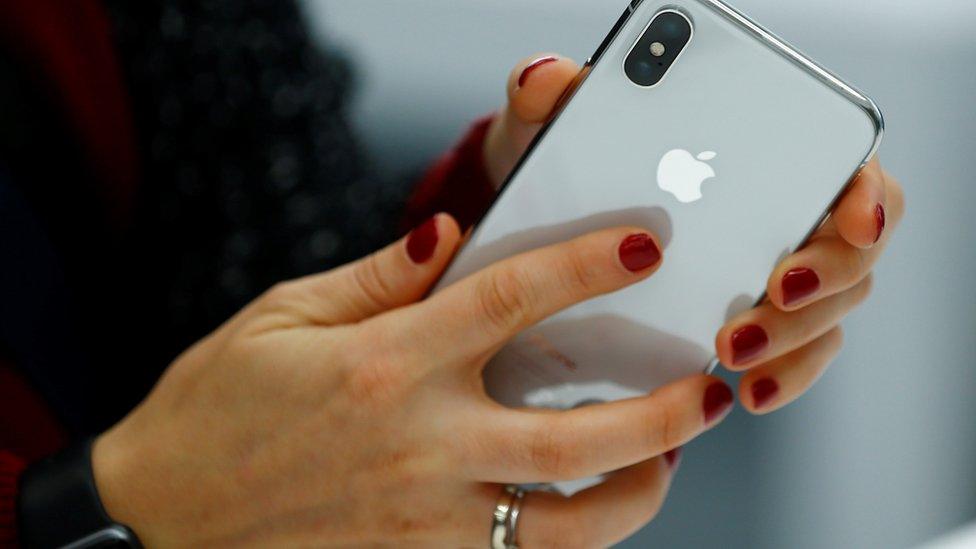
- Published3 August 2018
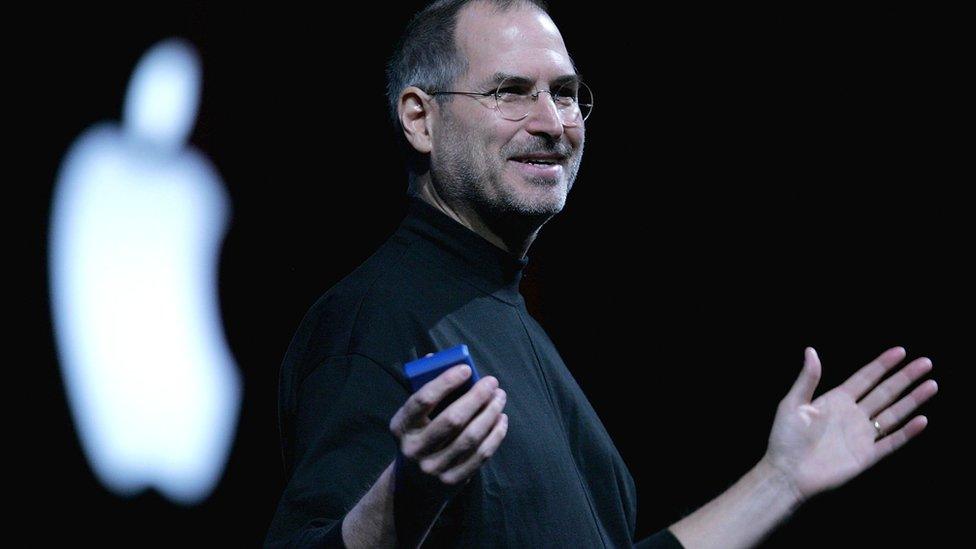
- Published6 October 2011